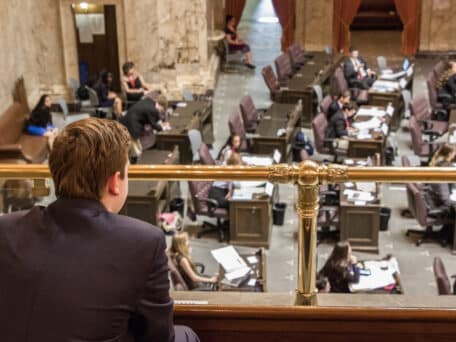Activists for the $15Now! movement refuse to admit that the artificially high minimum wage is negatively impacting businesses. Rather, they brush off struggling businesses as a result of the $15 minimum wage policy with ignorant—and heartless—explanations.
The Washington Policy Center points to one far-left blogger who recently wrote that he is “sick of writing about Z Pizza” (a restaurant that failed due to the $15 minimum wage). He goes on to question whether or not the $15 minimum wage is the culprit, “blaming instead the closure on the ‘risky’ nature of the restaurant business and his opinion that Z Pizza is a ‘mediocre restaurant’ that offers up ‘bland’ pizza and a ‘less than desirable atmosphere.’”
Certainly, starting any business is risky. But, the far-left blogger’s refusal to recognize the reality that the $15 minimum wage “makes running restaurant a more risky, and increases the likelihood of people losing their jobs” reveals the reckless and blind support behind the artificial wage. Washington Policy Center,
“The minimum wage is a government-set price control on labor. Setting an artificially-high wage shuts younger and lower-skilled workers out of the legal work force, or forces them into the black market where, without workplace and civil rights protections, they are more likely to be exploited…
“The $15 wage law forces up prices and raises the cost of living for everyone, which of course falls hardest on the poor. For some small businesses, the relentless price and labor cost increases force them to close, like Z Pizza in Seattle, or the Legendary Palace in Oakland’s Chinatown, and all the employees, including the highest-paid, lose their jobs.
“Sure, strict $15 wage laws hit small businesses, especially neighborhood restaurants and small manufacturers, but the pain falls hardest on those least able to afford it, the poor, the marginalized, the young, the jobless. For workers whose skill level or experience does not equal or exceed the economic value of the government-set price, their wage is zero.”
There is, at least, one liberal political blogger that admits the truth. Columnist Kevin Drum acknowledges that the $15 minimum wage will not relieve poverty. But, he does think the $15 minimum wage in Seattle and San Francisco “gives us a great set of natural experiments to figure out what happens when you raise the minimum wage a lot.” The Washington Policy Center,
“Of course, Drum acknowledges the laws of economics make the outcome of those experiments pretty predictable—he supports a higher minimum wage, but believes the $15 wage mandate is “too high” and will have “devastating” effects on most industries.
“Drum thinks restaurants and other service industries, such as retail stores, will probably fare okay. Their customers, on the other hand, won’t fare as well, because he says they will simply raise prices and pass those costs to consumers. He speculates manufacturing in those cities will be crippled, as they either “evaporate completely…or perhaps migrate just across borders [to cities without $15 wage mandates].” And Drum theorizes the high wage will encourage fast food employers to cut back on jobs in favor of increased automation.
“Drum’s conclusions aren’t just speculation. They are already happening in the cities that are serving as the guinea pigs for a $15 minimum wage.”
A disturbing number of $15Now! activists dismiss the struggles of businesses and workers—struggles brought on by their policy—“because their political narrative requires that $15 wage laws have only an upside, no downside.” $15Now! activists argue that the artificially high minimum wage helps the poor. Yet, writes the Washington Policy Center, stories of the poor and the unemployed brought on by their policy “don’t fit the narrative, so their voices are not heard.”




